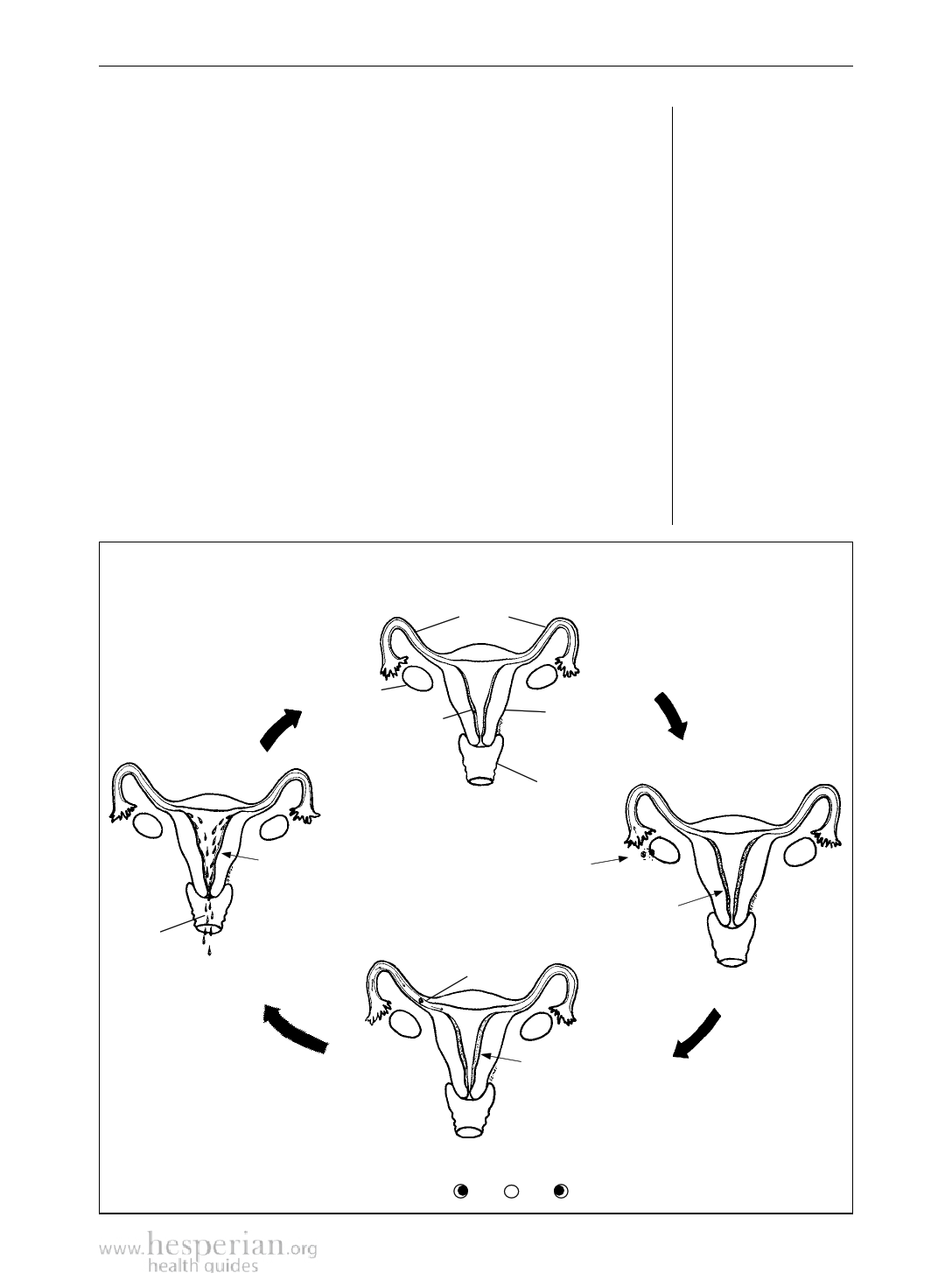
About 14 days before the end of the cycle, when the soft
lining is ready, an egg is released from one of the ovaries. This
is called ovulation. The egg then travels down a tube into the
womb. At this time a woman is fertile and she can become
pregnant. If the woman has had sex recently, the man’s sperm
may join with her egg. This is called fertilization and is the
beginning of pregnancy.
During the last 14 days of the cycle—until her next monthly
bleeding starts—a woman also produces progesterone.
Progesterone causes the lining of the womb to prepare for
pregnancy.
Most months, the egg is not fertilized, so the lining inside
the womb is not needed. The ovaries stop producing estrogen
and progesterone, and the lining begins to break down. When
the lining inside the womb leaves the body during the monthly
bleeding, the egg comes out too. This is the start of a new
monthly cycle. After the monthly bleeding, the ovaries start to
make more estrogen again, and another lining begins to grow.
The monthly cycle
Just after monthly bleeding.
tubes
Monthly Bleeding 49
➤ A woman may
find that the time
between each
monthly bleeding
changes as she grows
older, after she gives
birth, or because of
stress.
blood
ovary
lining of
the womb
womb
vagina
During monthly
bleeding, the lining
breaks down.
When the ovary
releases an egg
(ovulation)...
...the lining
becomes
thicker.
egg
5 days after
ovulation, the
lining becomes
even thicker.
For most women, the whole menstrual cycle takes about 28 days—
just like the cycle of the moon (● ➞ ➞ ➞ ➞ ●).
Where Women Have No Doctor 2012